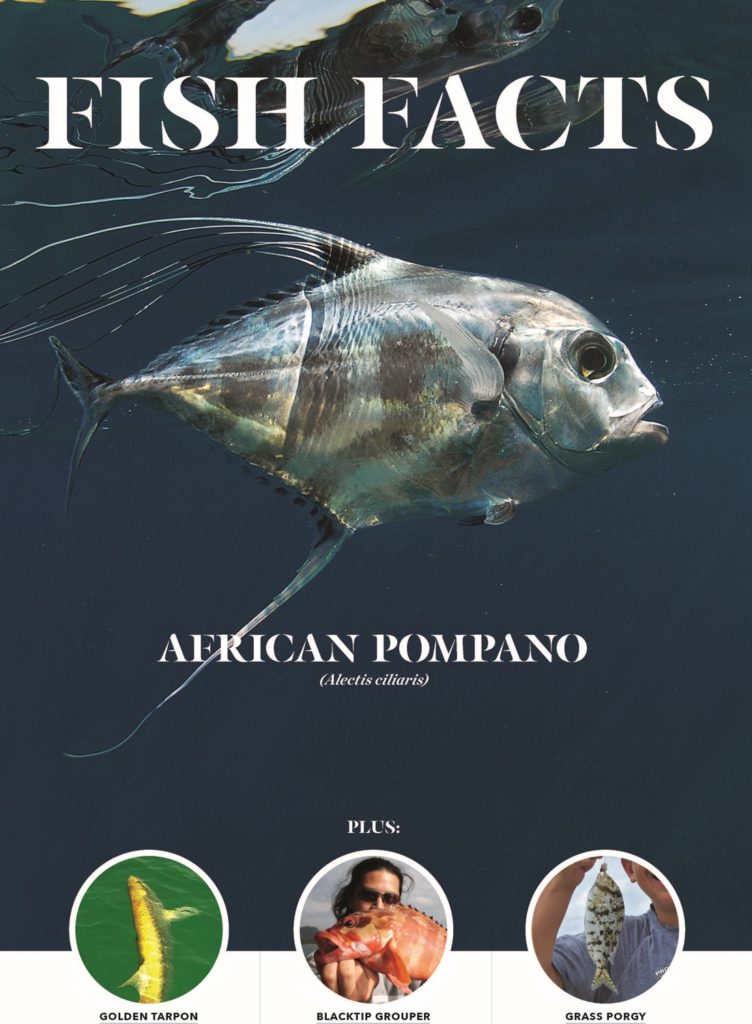In each issue of Sport Fishing magazine, a panel of five international expert ichthyologists identifies unusual and often amazing fishes in photos submitted by readers. Find out what they are and learn fascinating facts about them.
DEMON FROM THE DEPTHS
Question:
We caught two of these fish in the Seychelles while fishing with A1 Fishing Seychelles in a bit more than 600 feet of water. We were bottomfishing using large chunks of bonito. What can you tell us about this toothy creature?
Grant Heyer
Seychelles Sports Fishing Club
The Seychelles
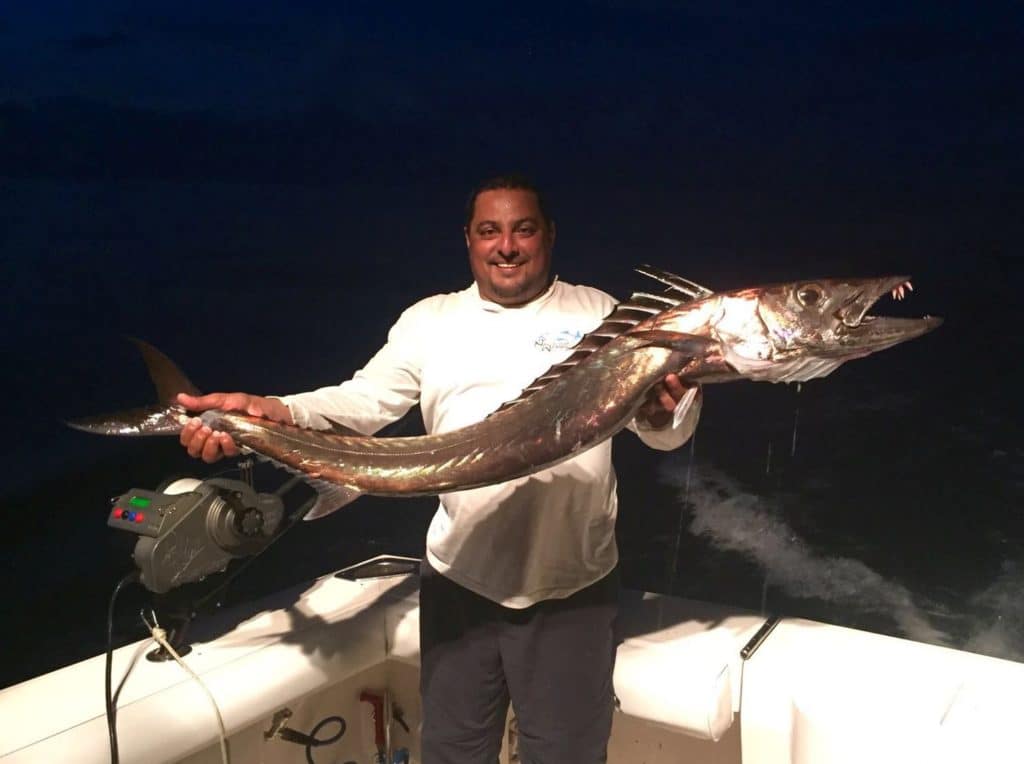
Answer:
They are, Grant, cracking specimens of black snoek, Thyrsitoides marleyi. This species is one of the largest members of the snake mackerel family (Gempylidae), reputedly growing to a maximum size of 6½ feet and 15 to 20 pounds. Black snoek are widespread in the Indian and Pacific oceans, where they’re most common around the lower slopes of seamounts or ridges down to depths of 1,200 feet or more. However, they often move closer to the surface at night to feed on a wide variety of mesopelagic fishes, squids and crustaceans. Black snoek appear very similar to the closely related barracouta (Thyrsites atun), though the latter is restricted to cool-temperate and cold-temperate waters around 55 to 65 degrees F in the southern Indian, Pacific and Atlantic oceans. To date, no black snoek has been entered with the IGFA, so there is so far no world record.
— Ben Diggles
A FUNGUS AMONGUS IN FLORIDA
Question:
I’ve been noticing that a lot of snook from central Florida’s Indian River, where I dive and fish, have green, slimy algae patches on them. What would cause that?
Jason Arnold
Fort Lauderdale, Florida
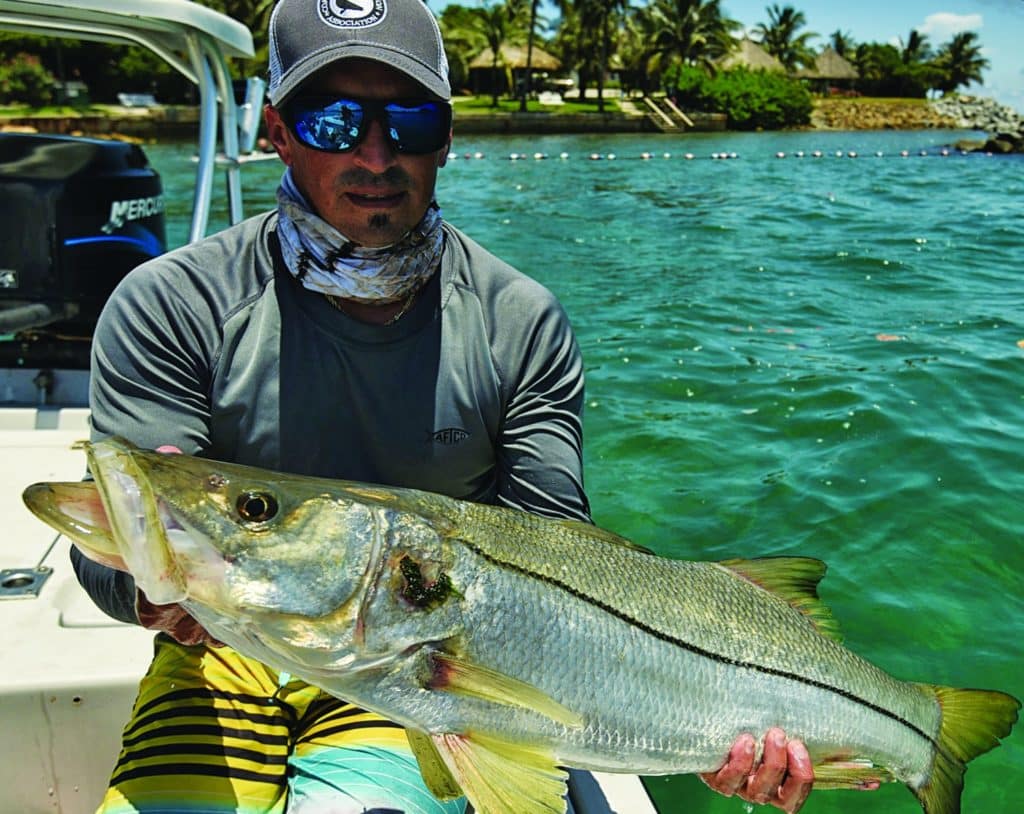
Answer:
This isn’t the first time I’ve seen a photograph of algae growing on a fish, Jason. What normally happens is that algae colonize skin lesions. I sent your photo to Dr. Ed Noga, a renowned expert on fish diseases, for his analysis. Dr. Noga noted that skin ulcerations often result from some sort of stress factor, and in natural ecosystems, stress factors include environmental pollution, for which some of the estuaries along Florida’s east coast have been gaining notoriety. Dr. Noga also noted that when fish are stressed, natural antibiotic levels in their skin are lowered, allowing organisms like algae, which are normally not harmful, to gain a foothold.
— Ray Waldner
SHARP AS A RAZOR
Question:
I caught a couple of these strange fish near my hometown in about 55 feet of water on sabikis while drifting over a sandy bottom. Seems like these might be related to parrotfish?
Justin Perrino
Clearwater, Florida
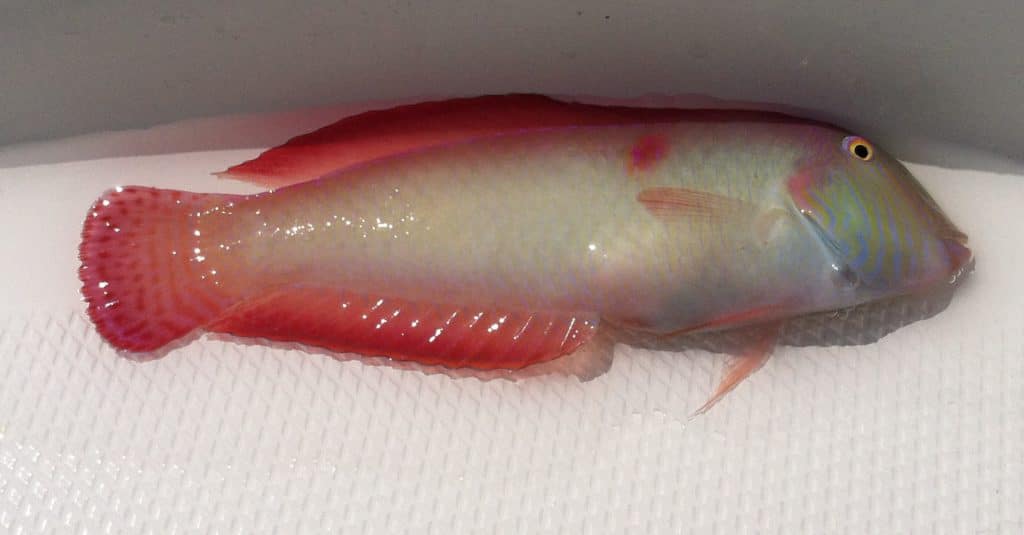
Answer:
Well, Justin, you weren’t too far off. Your catch is a pearly razorfish, Xyrichtys novacula. It’s a member of the wrasse family, which is closely related to the parrotfishes. Pearly razorfish are interesting. Most wrasses live around reefs or rocky bottoms, but these guys live on open sand bottom. They often bury themselves in the sand completely or with only their head exposed, possibly for extended periods or just during daylight, since they prefer to scrounge around on the sandy surface at night. They are favorite aquarium fishes, both for their striking color and their unusual burying habits. They do have some nasty fangs, which can render a tiny but painful wound to an unsuspecting angler. Pearlies are small, rarely over 10 inches. They’re found on both sides of the Atlantic, on our side from the Carolinas to Brazil.
— Bob Shipp
COSTA RICA GOLD
Question:
A while back, Sport Fishing published a Fish Facts question regarding a cool little silver fish (turned out to be a Pacific bumper) that came up on a sabiki rig at the small tower where fishermen go for bait just outside Golfito, Costa Rica. Now I’m back with another cool little fish that I caught on a sabiki recently in the same place. What have I caught this time?
Adrian Gray
Fort Lauderdale, Florida
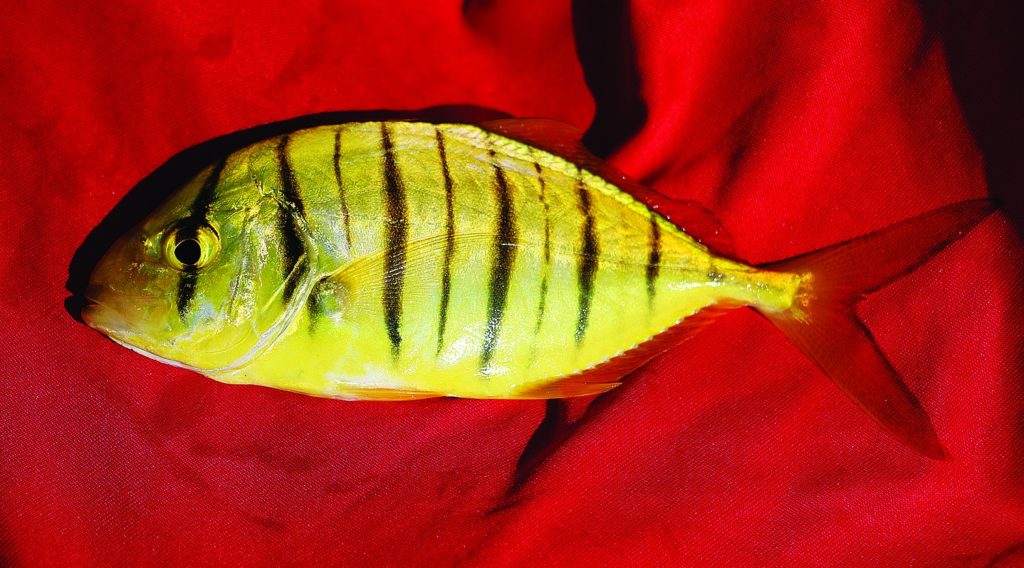
Answer:
Hi, Adrian. First, from the perspective of a fisheries scientist, let me reinforce the idea of using sabiki rigs: They’re definitely the best way to catch weird little oobly-goobly fishes that most anglers seldom see. The little golden beauty you caught is a juvenile golden trevally, Gnathanodon speciosus, related to other members of the jack family, such as amberjack and pompano. Adult goldens (the IGFA all-tackle record is 32½ pounds, from western Australia in 2002) are much more elongate and silver, with faint vertical bars. Golden trevally are native to both sides of the Pacific, as far south as Colombia in the eastern Pacific. However, this species also seems to have passed through the Panama Canal to the Atlantic. Juveniles often live among the tentacles of jellyfish, and many times you’ll see them swimming ahead of sharks and other large pelagic animals. Adults are common in deep lagoons and nearshore reefs, from the surface down to depths of about 130 feet. Particularly in southern Mexico and Central America, golden trevally are caught in some numbers by artisanal fishermen; you can see them sold fresh (and sometimes salted) in local markets.
— Milton Love
From the Fish Facts Archives
LINGCOD (Ophiodon elongatus)
The lingcod is a limited edition. It’s found strictly on the North American Pacific coast, from Alaska through California and as far south as northern Baja, and it’s the only species in its genus (which is to say that there’s nothing quite like it). Voracious predators that can reputedly grow to more than 100 pounds (the IGFA world record stands at 82 pounds, 9 ounces, from the Gulf of Alaska in 2007), lings often latch onto rockfish or smaller lings being reeled up, refusing to let go until on the gaff.
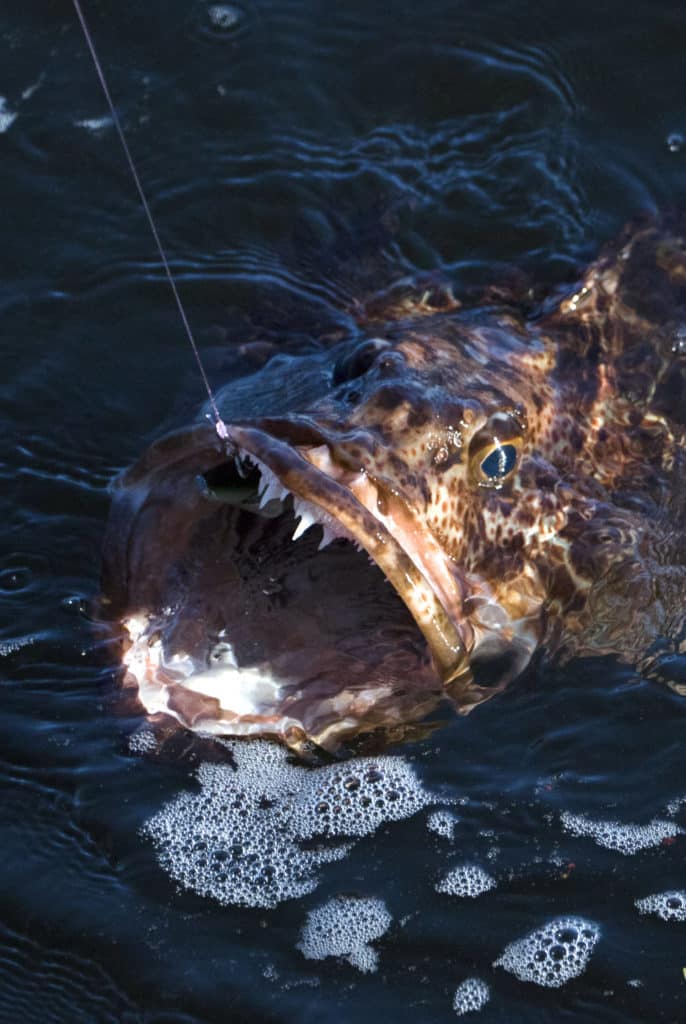
Sport Fishing‘s Prestigious International Panel of Experts
Northeast
Mike Fahay, Sandy Hook Marine Lab, New Jersey
Southeast
Ray Waldner, Ph.D., Palm Beach Atlantic University, Florida
Gulf of Mexico
Bob Shipp, Ph.D., University of South Alabama
West Coast
Milton Love, Ph.D., UCSB, California
Far Pacific
Ben Diggles, Ph.D., Queensland, Australia
Bluewater Pelagics
John Graves, Ph.D., Virginia Institute of Marine Science
CHALLENGE OUR EXPERTS (And Win Up to 10,800 Yards of Line!)
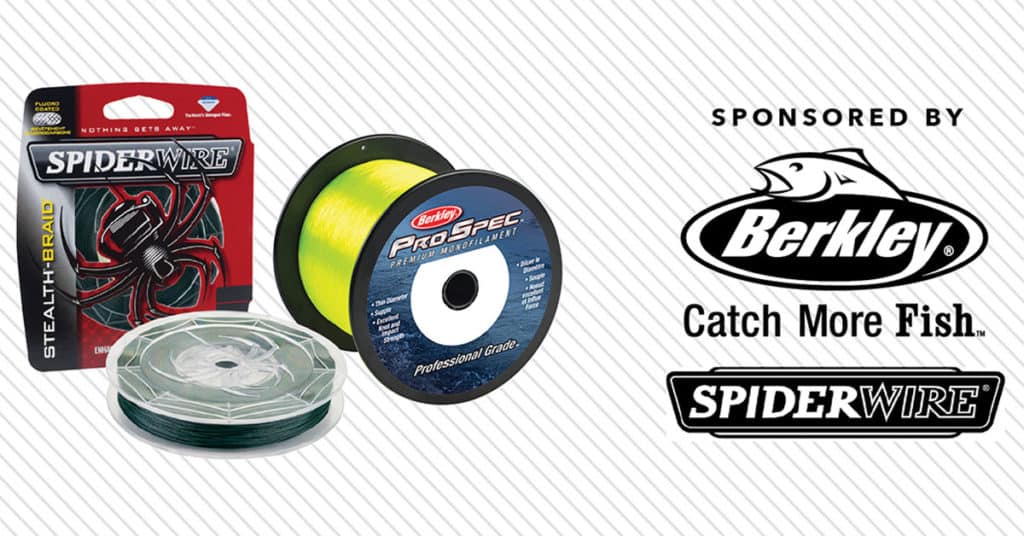
Send in your question and any relevant photos of your mysterious catch or observation for our experts’ ID and feedback. If we publish your question and you have a shipping address within the United States or Canada, you’ll win a 3‑pound spool of Berkley Pro Spec ocean-blue or fluorescent-yellow monofilament (1,000 to 10,800 yards, depending on line strength) or a 1,500‑yard spool of Spiderwire Stealth braid up to 100‑pound‑test! Send questions and images via email to fishfacts@sportfishingmag.com (include your hometown) or via post to Sport Fishing Fish Facts, 460 N. Orlando Ave., Suite 200, Winter Park, FL 32789.
SEE EVEN MORE STRANGE FISH including a golden tarpon!
Click on the image below
